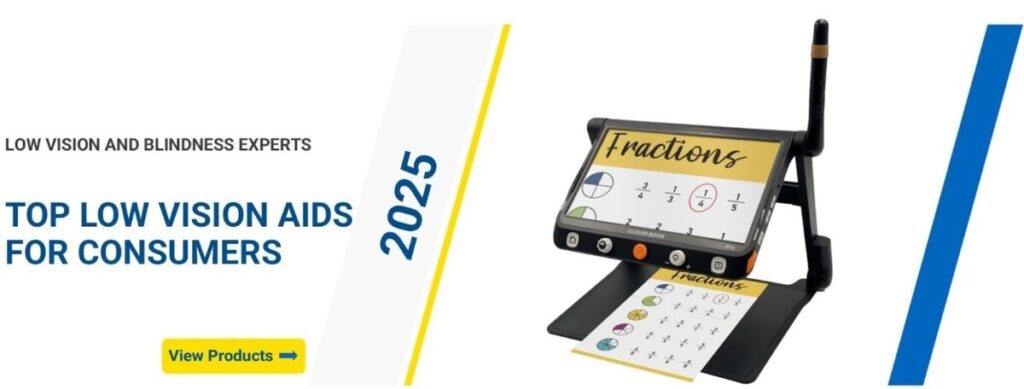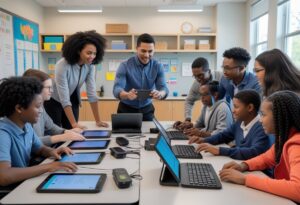Tips for Parents for Protecting Children’s Vision: Essential Strategies for Safeguarding Your Child’s Eye Health

Understanding Vision Challenges in Children
Children face various visual impairments that can significantly impact their development and learning. Early recognition of symptoms allows parents to seek appropriate interventions and support services.
Common Visual Impairments and Conditions
Myopia (nearsightedness) affects approximately 42% of Americans and continues to increase among children. This condition makes distant objects appear blurry while near objects remain clear.
Amblyopia, commonly called “lazy eye,” occurs when one eye fails to develop normal vision during childhood. The brain favors the stronger eye, causing the weaker eye to become less functional over time.
Strabismus involves misaligned eyes that don’t work together properly. One eye may turn inward, outward, upward, or downward while the other focuses normally.
Cortical visual impairment (CVI) results from brain damage rather than eye problems. Children with CVI may have difficulty processing visual information despite having healthy eyes.
Other conditions include:
- Albinism – reduced pigment affecting vision clarity
- Cataracts – clouding of the eye’s lens
- Glaucoma – increased eye pressure damaging the optic nerve (Download our Living With Glaucoma Guide: Five comprehensive sections to give you insights and management strategies – https://nelowvision.com/living-with-glaucoma-helpful-resource/)
- Nystagmus – involuntary eye movements
Recognizing Early Signs of Vision Problems
Parents should watch for specific behavioral indicators that suggest vision difficulties. Children may not realize their vision differs from others, making parental observation critical.
Academic warning signs include difficulty reading, writing outside lines, or losing place while reading. Children might hold books very close or far from their eyes.
Physical symptoms involve frequent eye rubbing, excessive blinking, or complaints of headaches. Squinting, covering one eye, or tilting the head while focusing also indicate potential problems.
Social and motor difficulties manifest as clumsiness, trouble with sports, or reluctance to participate in visual activities. Children may avoid coloring, puzzles, or detailed tasks.
Behavioral changes include shortened attention spans during visual tasks, irritability when doing homework, or a preference for audio over visual entertainment.
Schedule professional eye examinations if any of these signs appear, even if they seem minor.
The Impact of Low Vision on Child Development
Low vision affects multiple developmental areas simultaneously. Academic performance suffers when children cannot see classroom materials clearly, leading to falling behind peers in reading and mathematics.
Social development challenges arise when children struggle to recognize faces, interpret facial expressions, or participate in group activities. This can result in isolation or reduced self-confidence.
Motor skill development becomes delayed when visual feedback is limited. Children may struggle with fine motor tasks like writing or gross motor activities like catching balls.
Independence skills develop more slowly without adequate vision. Simple tasks like organizing belongings, navigating spaces, or self-care activities require additional support and training.
Early intervention through assistive technology training and specialized services helps children develop compensation strategies. These approaches enable children to achieve their full potential despite vision challenges.
The Importance of Regular Eye Exams
Regular eye examinations serve as the foundation for protecting children’s vision, particularly for families managing low vision challenges. Early detection through consistent screenings helps identify conditions like myopia and amblyopia before they significantly impact a child’s development and learning abilities.
Recommended Eye Examination Schedule by Age
Newborn to 2 Years: The first comprehensive eye exam should occur between 6-12 months of age. During this critical period, eye care professionals can detect congenital conditions and developmental abnormalities.
Many vision problems develop silently during infancy. Early screening helps identify issues that children cannot communicate themselves.
Ages 3-5 Years: Schedule examinations every 1-2 years during preschool years. This timing allows detection of amblyopia and refractive errors before school begins.
Vision problems can significantly affect learning readiness. Children often adapt to vision issues without showing obvious symptoms.
School Age (6-17 Years): Annual eye exams become essential during school years. Academic demands increase visual stress and can reveal previously undetected problems.
Myopia progression often accelerates during school years. Regular monitoring helps track changes and adjust treatment approaches accordingly.
Benefits of Early Detection and Intervention
Early identification of vision problems prevents academic challenges and behavioral issues. Children with undetected vision problems may struggle with reading, writing, and classroom participation.
Amblyopia treatment becomes less effective after age 8-9 years. Early detection during preschool years maximizes treatment success rates.
Vision problems can impact social development and self-confidence. Children may avoid activities they cannot see clearly, limiting their participation in sports and social interactions.
Treatment options expand significantly with early detection. Many conditions respond better to intervention when identified during critical developmental periods.
Regular examinations establish baseline measurements for tracking changes over time. This documentation proves valuable for monitoring progressive conditions and treatment effectiveness.
What to Expect During a Pediatric Eye Exam
Pre-Exam Preparation: Bring current glasses, medications list, and family vision history. Note any concerns about your child’s visual behavior or academic performance.
Visual Acuity Testing: Age-appropriate charts measure how clearly your child sees at various distances. Younger children may use picture charts instead of letters.
Eye Movement Assessment: The doctor evaluates how well both eyes work together. This testing identifies coordination problems that can affect reading and learning.
Internal Eye Examination: Dilating drops allow comprehensive examination of internal eye structures. This process detects diseases and developmental abnormalities not visible from outside.
Refraction Testing: Determines if corrective lenses are needed. Even mild refractive errors can significantly impact classroom performance and visual comfort.
The examination typically lasts 60-90 minutes including dilation time. Results help create individualized vision care plans for your child’s specific needs.
Creating a Healthy Visual Environment at Home
Establishing optimal lighting conditions and promoting regular outdoor activities are fundamental steps in supporting healthy vision development. These environmental factors directly impact myopia prevention and overall eye health in children.
Proper Lighting and Ergonomics for Reading and Study
Natural light from windows provides the best illumination for children with low vision. Position reading areas near windows where sunlight enters without creating harsh shadows or direct glare.
Task lighting essentials include adjustable desk lamps with LED bulbs that offer bright, steady illumination. The light source should come from behind or beside the child to prevent shadows falling across reading materials.
Control glare by using blinds or curtains to filter intense sunlight. Matte surfaces on desks and walls reduce reflected light that can strain developing eyes.
Contrast enhancement helps children distinguish text from backgrounds more easily. Use dark writing instruments on light paper, or provide high-contrast materials when standard options prove challenging.
Position screens 20-24 inches from the child’s eyes at a slight downward angle. The top of the screen should align with or sit slightly below eye level to maintain proper posture.
Take regular breaks following the 20-20-20 rule: every 20 minutes, look at something 20 feet away for 20 seconds. This simple practice reduces digital eye strain and supports healthy vision habits.
Encouraging Outdoor Activities for Eye Health
Outdoor time significantly reduces myopia risk in children and supports overall visual development. Research shows that children who spend more time outside develop nearsightedness at lower rates.
Daily outdoor exposure of at least 90 minutes provides natural light that stimulates proper eye growth. Morning and late afternoon activities offer the most beneficial lighting conditions.
Playground activities, nature walks, and backyard games encourage children to focus on distant objects. This natural distance viewing exercises eye muscles differently than close-up tasks.
Sun protection remains essential during outdoor activities. Wide-brimmed hats and UV-blocking sunglasses protect developing eyes from harmful radiation while still allowing beneficial light exposure.
Balance outdoor time with indoor activities to create varied visual experiences. Children need both distance viewing opportunities and appropriate near-work environments for comprehensive visual development.
Sports and active play naturally incorporate the visual tracking and depth perception skills that support healthy vision throughout childhood.
Screen Time and Digital Eye Strain: Strategies for Parents
Children with vision impairments face unique challenges when using digital devices, making the 20-20-20 rule and proper screen time limits essential for maintaining healthy vision. These strategies help reduce digital eye strain while supporting your child’s visual development.
Implementing the 20-20-20 Rule
The 20-20-20 rule provides a simple framework for protecting your child’s eyes during screen use. Every 20 minutes, encourage your child to look at something 20 feet away for at least 20 seconds.
For children with low vision, this break becomes even more critical. Their eyes work harder to process digital information, leading to faster fatigue and strain.
Making the Rule Work for Your Family:
- Set phone alarms or use apps that remind your child to take breaks
- Create visual cues around the house that signal 20-foot distances
- Practice identifying objects at proper distances during non-screen time
Children often hold devices closer to their faces than adults, increasing blue light exposure. The 20-20-20 rule helps counteract this natural tendency while giving developing eyes necessary rest periods.
Consider pairing these breaks with simple eye exercises. Have your child slowly blink several times or gently massage their temples to further reduce tension.
Setting Screen Time Limits for Children
Establishing clear boundaries around screen use protects your child’s developing vision while preventing digital eye strain symptoms like headaches and blurred vision.
Age-Appropriate Guidelines:
- Ages 2-5: 1 hour of high-quality programming daily
- Ages 6+: Consistent limits that don’t interfere with sleep, physical activity, or family time
- All ages: No screens 1 hour before bedtime
Creating Healthy Boundaries:
Monitor your child for signs of digital eye strain including frequent eye rubbing, complaints of tired eyes, or difficulty focusing after screen time. These symptoms often appear before parents realize limits have been exceeded.
Balance screen time with outdoor activities whenever possible. Natural light exposure supports healthy vision development and gives eyes a break from close-up digital work.
Use parental controls and built-in screen time features to track usage automatically. This removes guesswork and helps maintain consistent limits across different devices.
Nutrition and Habits for Lifelong Healthy Vision
Proper nutrition supports visual development in children, while safe hygiene practices protect against infections that can compromise their vision. These foundational habits become especially important for families managing low vision conditions.
Essential Nutrients for Eye Development
Vitamin A serves as the cornerstone nutrient for healthy vision development. Children need adequate vitamin A to support proper retinal function and night vision.
Sweet potatoes, carrots, and leafy greens like spinach provide excellent sources of beta-carotene, which the body converts to vitamin A. Eggs and dairy products offer direct vitamin A sources that children typically accept more readily.
Omega-3 fatty acids support retinal development and overall eye health. Fish such as salmon, tuna, and sardines contain high levels of these beneficial fats. For children who don’t eat fish, walnuts and flaxseeds provide plant-based alternatives.
Lutein and zeaxanthin act as natural filters against harmful blue light. These antioxidants concentrate in the macula and help protect developing eyes from environmental damage.
Dark leafy greens like kale and collard greens contain the highest concentrations. Corn and egg yolks also provide these protective compounds in forms children often find more appealing.
Promoting Safe Hygiene to Prevent Eye Infections
Hand washing represents the most effective prevention method against eye infections. Children should wash their hands thoroughly before touching their eyes or face.
Teach children to use soap and warm water for at least 20 seconds. This practice removes bacteria and viruses that commonly cause conjunctivitis and other eye infections.
Personal item separation prevents the spread of infectious agents between family members. Each child needs their own towels, pillowcases, and washcloths.
Replace or thoroughly clean items that come into contact with infected eyes. This includes makeup applicators, contact lens cases, and eye drops that may have been contaminated.
Screen time management reduces eye strain and promotes natural blinking patterns. The 20-20-20 rule helps maintain healthy vision: look at something 20 feet away for 20 seconds every 20 minutes.
Encourage children to take regular breaks from digital devices. Position screens at arm’s length and slightly below eye level to reduce strain on developing visual systems.
Protecting Eyes from Injury and Environmental Hazards
Eye injuries affect thousands of children annually, yet nine out of ten injuries could be prevented with proper protection. Sun exposure and impact hazards pose the greatest risks to developing vision.
Selecting and Using Protective Eyewear
Protective eyewear serves as the primary defense against sports-related and activity-based eye injuries. Shatterproof polycarbonate lenses provide superior impact resistance compared to regular prescription glasses.
Sports goggles designed specifically for high-impact activities offer the best protection. Basketball, soccer, baseball, and racquet sports require specialized eyewear that meets safety standards.
Key features to look for:
- Polycarbonate lens material
- Wraparound design for side protection
- Secure, comfortable fit
- ASTM or ANSI safety certification
Regular prescription glasses do not provide adequate protection during physical activities. Even minor impacts can cause standard lenses to shatter and potentially cause more harm.
For children already wearing corrective lenses, prescription safety glasses combine vision correction with impact protection. These specialized glasses ensure clear vision while maintaining safety standards.
Proper fit is essential for effectiveness. Loose-fitting protective eyewear can shift during activity, leaving eyes vulnerable to injury.
Sun Safety: Shielding Eyes from UV Rays
Ultraviolet radiation exposure during childhood contributes to long-term eye damage and vision problems later in life. Children’s eyes are particularly susceptible to UV damage because their natural lens filters less harmful radiation.
100% UV protection represents the minimum standard for children’s sunglasses. Look for labels specifically stating “100% UV protection” or “UV 400” to ensure adequate coverage.
Quality children’s sunglasses should include:
- UV-A and UV-B protection
- Impact-resistant lenses
- Comfortable, secure frames
- Wraparound style for maximum coverage
Outdoor activities require consistent sun protection, not just during bright, sunny days. UV rays penetrate clouds and reflect off surfaces like water, sand, and snow.
Wide-brimmed hats provide additional protection by blocking overhead sun exposure that sunglasses might miss. Combining hats with proper sunglasses creates comprehensive UV defense.
Consider photochromic lenses for children who frequently move between indoor and outdoor environments. These lenses automatically adjust to changing light conditions while maintaining UV protection.
Collaborating with Schools and Specialists
Working with educational teams and vision professionals ensures your child receives comprehensive support and proper accommodations. Building strong partnerships creates a network that addresses both learning needs and ongoing vision care requirements.
Advocating for Accommodations in Education
Start by requesting a comprehensive educational evaluation to document your child’s specific needs. This evaluation forms the foundation for developing an Individualized Education Program (IEP) or 504 plan.
Key accommodations to discuss include:
- Extended time for assignments and tests
- Large print materials or digital alternatives
- Preferential seating near the front of classrooms
- Access to assistive technology devices
- Modified lighting conditions
Schedule regular meetings with teachers, administrators, and support staff. Come prepared with documentation from eye care professionals and specific examples of how vision loss affects daily learning activities.
Essential team members typically include:
- Special education coordinators
- Teachers of the Visually Impaired (TVIs)
- Orientation and mobility specialists
- Assistive Technology Specialists
Document all communications and keep detailed records of agreed-upon accommodations. Follow up consistently to ensure implementations are working effectively and make adjustments as needed.
Visit our Resource Hub at the bottom of this page https://nelowvision.com/training-services/education-training-services/ for other helpful content.
Building Partnerships with Vision Care Professionals
Establish relationships with pediatric ophthalmologists and optometrists who specialize in children’s vision care. Schedule regular eye exams every six to twelve months to monitor changes in your child’s condition.
Create a communication bridge between medical professionals and school teams. Request detailed reports from eye appointments that can be shared with educational staff to inform accommodation decisions.
Important information to share includes:
- Current visual acuity measurements
- Recommended environmental modifications
- Assistive device prescriptions
- Prognosis and expected changes
Work with assistive technology providers to ensure your child has access to appropriate tools both at home and school. We help families identify devices that support learning independence and academic success.
Coordinate timing between medical appointments and IEP meetings when possible. Having current vision information available during educational planning sessions leads to more informed accommodation decisions.
Frequently Asked Questions
Parents with low vision face unique challenges when protecting their children’s eyesight and navigating vision care decisions. These questions address practical strategies for eye care, educational support, health monitoring, and accessing specialized resources.
What are effective eye care tips for children?
Schedule comprehensive eye exams at ages 4 and 6, or earlier if you notice any abnormalities. Children with family history of eye problems like strabismus or high prescription needs require more frequent monitoring.
Encourage children to wear protective eyewear during sports and outdoor activities. UV protection is essential for developing eyes, especially during peak sun hours.
Teach proper hygiene habits like washing hands before touching eyes. Limit screen time and encourage frequent breaks using the 20-20-20 rule.
How can I support my visually impaired child’s education?
Work with your child’s school to develop appropriate accommodations and individualized education plans. Request assessments for assistive technology needs and mobility training.
Connect with Teachers of the Visually Impaired in your school district. They specialize in educational strategies for students with vision impairments.
Ensure your child has access to materials in their preferred format, whether large print, braille, or digital. We provide training on assistive technology tools that can enhance learning independence.
What common symptoms indicate eye problems in children?
Watch for frequent eye rubbing, squinting, or complaints of headaches after visual tasks. Children may hold books very close or sit near the television.
Notice if your child tilts their head consistently or covers one eye when looking at objects. Difficulty tracking moving objects or clumsiness with depth perception are concerning signs.
Red, watery, or crusty eyes that persist beyond a few days warrant professional evaluation. Light sensitivity or complaints that things look blurry require immediate attention.
What are the best dietary supplements for promoting kids’ eye health?
Omega-3 fatty acids support retinal development and overall eye health. Foods rich in these nutrients include fish, walnuts, and flaxseeds.
Vitamin A promotes healthy vision development and can be found in carrots, sweet potatoes, and leafy greens. Lutein and zeaxanthin from spinach and eggs protect against harmful light exposure.
Always consult your child’s pediatrician before starting supplements. A balanced diet typically provides necessary nutrients for healthy eye development.
How can I improve my child’s eyesight naturally?
Encourage outdoor play time, as natural light exposure may help prevent myopia progression. Studies suggest children need at least 90 minutes of outdoor activity daily.
Promote good lighting for reading and homework activities. Position light sources to minimize glare and shadows on work surfaces.
Ensure adequate sleep, as eyes need rest to repair and regenerate. Establish consistent bedtime routines that limit screen exposure before sleep.
What resources are available for parents raising a child with significant vision impairment?
National organizations provide comprehensive support including educational materials, camps, and adaptive sports programs. Many offer parent support groups and mentorship opportunities.
State agencies for the blind provide early intervention services and ongoing support throughout childhood. These services often include orientation and mobility training.
We offer specialized assistive technology training and resources for families navigating vision loss. Our programs help children develop independence skills using leading-edge adaptive tools and techniques.
Discover the Best Low Vision Solutions Today
At New England Low Vision and Blindness, we are committed to helping individuals with visual impairments regain independence and improve their quality of life. Our Top 10 Low Vision Aids for People Who are Visually Impaired features expertly selected tools designed to address everyday challenges, from enhancing reading and writing to simplifying daily tasks. Explore our comprehensive range of low vision aids and find the perfect solution to meet your unique needs. Visit us today and take the first step toward a brighter, more accessible future!




